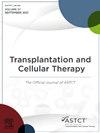Reni-Cel, an Investigational AsCas12a Gene-Edited Cell Medicine, Led to Sustained Hemoglobin Normalization and Increased Fetal Hemoglobin in Patients with Severe Sickle Cell Disease Treated in the RUBY Trial
IF 3.6
3区 医学
Q2 HEMATOLOGY
引用次数: 0
Abstract
Introduction
Sickle cell disease (SCD) complications, including vaso-occlusive events (VOEs), are reduced when fetal hemoglobin (HbF, α2γ2) is durably increased. Renizgamglogene autogedtemcel (reni-cel), an investigational gene-edited autologous hematopoietic stem cell therapy, is comprised of CD34+ cells edited at the γ-globin gene (HBG1/2) promoters with a highly efficient and specific, proprietary gene-editing nuclease, AsCas12a. These edits mimic naturally occurring variants of hereditary persistence of HbF. In preclinical studies, editing CD34+ cells from patients with SCD at this genomic region led to robust HbF production and significantly reduced sickling in erythroid lineage cells. The ongoing RUBY trial (NCT04853576) is a Phase I/II/III, multicenter, open label, single arm study evaluating safety, tolerability, and efficacy of reni-cel in patients with severe SCD.
Methods
Participants (pts) 12–50 years (yrs) of age who have severe SCD, defined as ≥2 severe VOEs/yr in the 2 yrs before consent, are eligible. Autologous CD34+ hematopoietic stem and progenitor cells are mobilized using plerixafor, collected, and edited at the HBG1/2 promoters. After myeloablative conditioning with busulfan, pts receive a single infusion of reni-cel (≥3 × 106 CD34+ cells/kg) and are monitored for 24 months (mos).
Results
As of June 28, 2024, 21 pts received reni-cel and were a median (range) of 8.0 (0.6–24.1) mos post-reni-cel infusion; 7 pts had >1 yr follow-up. Median (range) days to neutrophil and platelet engraftment was 23.0 (15–29) and 24.5 (18–51) days, respectively (n=20). At Mo 6, mean (standard deviation [SD]) total hemoglobin (Hb) was 14.2 (2.0) g/dL (n=10) and HbF was 48.2% (3.4%; n=12). These levels were the same or higher through last follow-up. The % F-cell and mean HbF concentration/F-cell (MCH-F/F-cell) increased early. The MCH-F/F-cell ratio was >10 pg/F-cell through last follow-up. Hemolysis markers improved or normalized by Mo 6 and were generally maintained over time. No pts experienced VOEs post-infusion compared with a mean (SD) of 4.9 (2.8) severe VOEs/yr in the 2 yrs before enrollment (n=21). There were high levels of allelic editing at Mo 12 (mean [SD]: in peripheral blood nucleated cells [n=4], 80.9% [5.9%]; in bone marrow-derived CD34+ cells [n=3], 86.9% [4.1%]). The safety profile reflected myeloablative conditioning with busulfan.
Conclusions
Results with reni-cel treatment were promising, including reliable and prompt engraftment, early Hb normalization, and durable increases in HbF. The data also demonstrate improvement in hemolysis markers, sustained high levels of editing, resolution of VOEs, and a safety profile consistent with myeloablative conditioning with busulfan. These findings build on clinical evidence supporting continued investigation of reni-cel in the RUBY trial.
© American Society of Hematology (2024). Reused with permission.
Reni-Cel是一种研究性的AsCas12a基因编辑细胞药物,在RUBY试验中治疗的严重镰状细胞病患者中导致持续的血红蛋白正常化和胎儿血红蛋白升高
当胎儿血红蛋白(HbF, α2γ2)持续升高时,镰状细胞病(SCD)并发症,包括血管闭塞事件(VOEs),会减少。Renizgamglogene自体造血干细胞(reni- cell)是一种正在研究的基因编辑的自体造血干细胞疗法,由在γ-珠蛋白基因(HBG1/2)启动子处编辑的CD34+细胞组成,具有高效、特异性、专有的基因编辑核酸酶AsCas12a。这些编辑模拟了HbF遗传持久性的自然变异。在临床前研究中,编辑来自该基因组区域的SCD患者的CD34+细胞可以产生强大的HbF,并显着减少红系细胞的镰状细胞。正在进行的RUBY试验(NCT04853576)是一项I/II/III期、多中心、开放标签、单组研究,评估肾细胞治疗严重SCD患者的安全性、耐受性和有效性。方法12-50岁的重度SCD患者(同意前2年内定义为≥2例重度VOEs/年)纳入研究。自体CD34+造血干细胞和祖细胞使用plerixafor动员,收集和编辑HBG1/2启动子。在用布苏凡进行清髓调节后,患者接受单次肾细胞输注(≥3 × 106 CD34+细胞/kg),并监测24个月(最多)。截至2024年6月28日,21名患者接受肾细胞输注,肾细胞输注后的中位(范围)为8.0 (0.6-24.1);7名患者随访1年。中性粒细胞和血小板植入的中位(范围)天数分别为23.0(15-29)天和24.5(18-51)天(n=20)。在第6个月,平均(标准差[SD])总血红蛋白(Hb)为14.2 (2.0)g/dL (n=10), HbF为48.2% (3.4%;n = 12)。在最后一次随访中,这些水平相同或更高。f -细胞百分比和平均HbF浓度/ f -细胞(MCH-F/ f -细胞)早期升高。末次随访时MCH-F/ f细胞比值为10 pg/ f细胞。溶血指标经mo6改善或恢复正常,并随时间维持。与入组前2年平均(SD) 4.9(2.8)例严重VOEs/年(n=21)相比,没有患者在输注后出现VOEs。在Mo 12时,外周血有核细胞中存在高水平的等位基因编辑(mean [SD]:: [n=4], 80.9% [5.9%];骨髓来源的CD34+细胞[n=3], 86.9%[4.1%])。安全性反映了用丁硫凡进行骨髓清除调节。结论肾细胞治疗的结果是有希望的,包括可靠和迅速的植入,早期Hb正常化,以及HbF的持续增加。数据还显示溶血标志物的改善,持续高水平的编辑,VOEs的分辨率,以及与布苏凡清髓调节一致的安全性。这些发现建立在支持在RUBY试验中继续研究肾细胞的临床证据之上。©美国血液学学会(2024)。在获得许可的情况下重用。
本文章由计算机程序翻译,如有差异,请以英文原文为准。
求助全文
约1分钟内获得全文
求助全文
来源期刊

Transplantation and Cellular Therapy
Medicine-Hematology
CiteScore
7.00
自引率
15.60%
发文量
1061
审稿时长
51 days
 求助内容:
求助内容: 应助结果提醒方式:
应助结果提醒方式:


